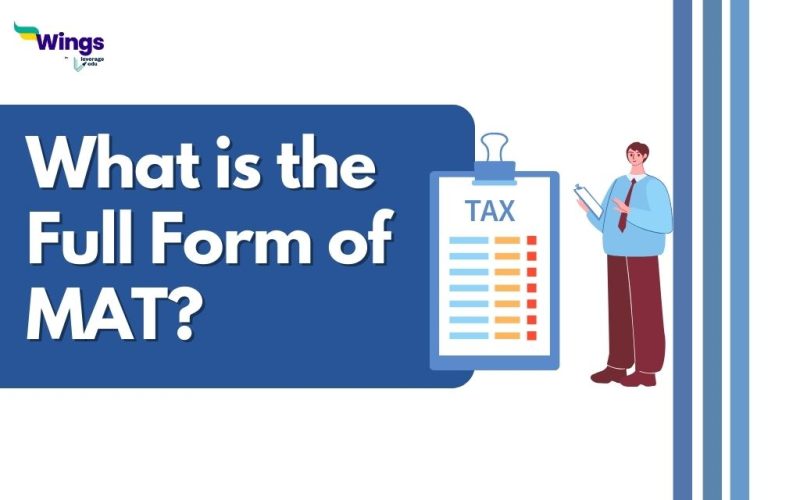If you are a company owner or a taxpayer in India, you might have heard of MAT full form, which stands for Minimum Alternate Tax. But what exactly is MAT and why is it important to know about it? In this blog, we will explain the concept, purpose, and calculation of MAT in simple terms.
MAT Full Form: Why is it Levied?
Table of Contents [show]
MAT is a tax imposed by the Income Tax Act on companies that make huge profits but pay little or no tax by taking advantage of various deductions and exemptions available under the law. The objective of levying MAT is to bring such “zero tax companies” into the tax net and ensure that they pay a minimum amount of tax on their book profits.
Book profit is the net profit as shown in the profit and loss account of a company, after making certain adjustments as prescribed by section 115JB of the Income Tax Act. Book profit may differ from taxable income, which is calculated as per the normal provisions of the law.
How is MAT Calculated and Paid?
MAT is calculated at the rate of 15% (plus surcharge and cess as applicable) on book profit. However, MAT is applicable only if it is higher than the normal tax liability of the company. In other words, a company has to pay higher of the following two amounts as tax:
- Normal tax liability, which is computed at the rate of 30% (plus surcharge and cess as applicable) on taxable income.
- MAT, which is computed at the rate of 15% (plus surcharge and cess as applicable) on book profit.
The company has to pay MAT along with its regular income tax return. The difference between MAT and normal tax liability, if any, can be carried forward and claimed as credit against future tax liability for up to 15 years.
What are the benefits of MAT?
MAT has some benefits for both the government and the companies. Some of them are:
- MAT ensures that every company pays a minimum amount of tax and contributes to the public revenue.
- MAT reduces the gap between book profit and taxable income and brings more transparency and fairness in taxation.
- MAT encourages companies to invest in productive activities rather than in tax-saving schemes.
Must Read: What is the full form of PAN?
Must Read: What’s the IMRB Full Form?
We hope that this blog helped you understand MAT full form, its purpose, calculation, payment, and benefits for the government and the companies. To learn more full forms like this, visit our General Knowledge page daily, or check out this full forms list containing 300+ alphabetically arranged acronyms. Just keep following Leverage Edu. Happy Learning!
 One app for all your study abroad needs
One app for all your study abroad needs















 45,000+ students trusted us with their dreams. Take the first step today!
45,000+ students trusted us with their dreams. Take the first step today!
